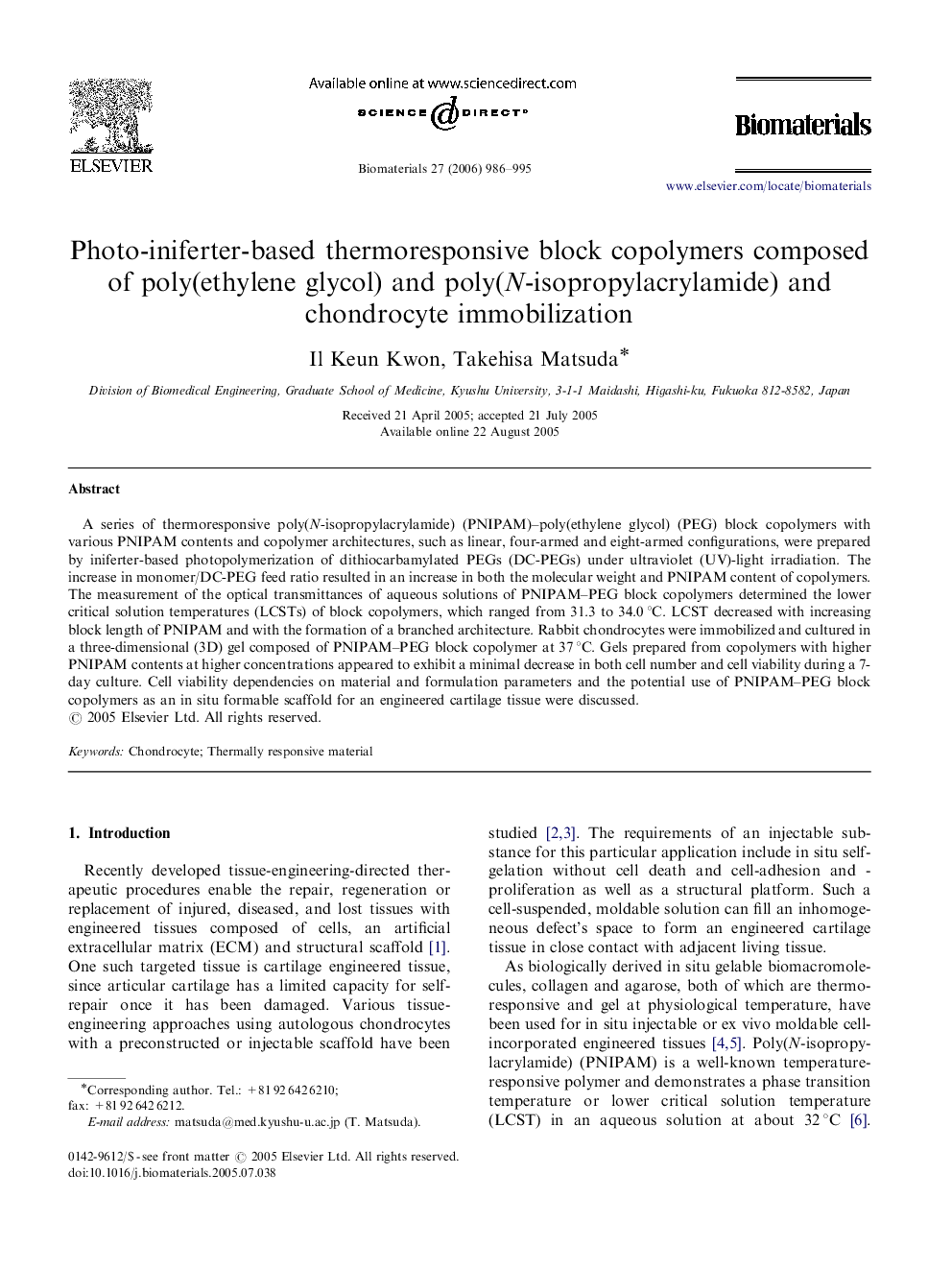| Article ID | Journal | Published Year | Pages | File Type |
|---|---|---|---|---|
| 12185 | Biomaterials | 2006 | 10 Pages |
A series of thermoresponsive poly(N-isopropylacrylamide) (PNIPAM)–poly(ethylene glycol) (PEG) block copolymers with various PNIPAM contents and copolymer architectures, such as linear, four-armed and eight-armed configurations, were prepared by iniferter-based photopolymerization of dithiocarbamylated PEGs (DC-PEGs) under ultraviolet (UV)-light irradiation. The increase in monomer/DC-PEG feed ratio resulted in an increase in both the molecular weight and PNIPAM content of copolymers. The measurement of the optical transmittances of aqueous solutions of PNIPAM–PEG block copolymers determined the lower critical solution temperatures (LCSTs) of block copolymers, which ranged from 31.3 to 34.0 °C. LCST decreased with increasing block length of PNIPAM and with the formation of a branched architecture. Rabbit chondrocytes were immobilized and cultured in a three-dimensional (3D) gel composed of PNIPAM–PEG block copolymer at 37 °C. Gels prepared from copolymers with higher PNIPAM contents at higher concentrations appeared to exhibit a minimal decrease in both cell number and cell viability during a 7-day culture. Cell viability dependencies on material and formulation parameters and the potential use of PNIPAM–PEG block copolymers as an in situ formable scaffold for an engineered cartilage tissue were discussed.
